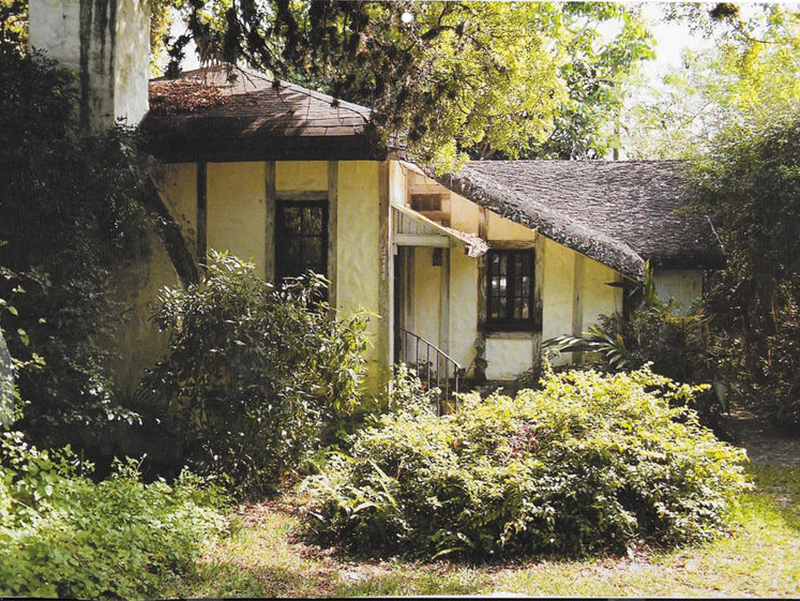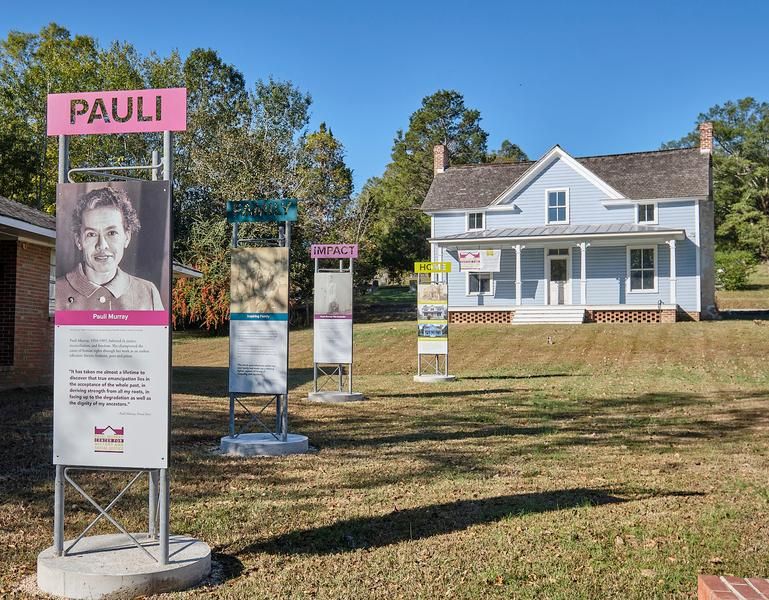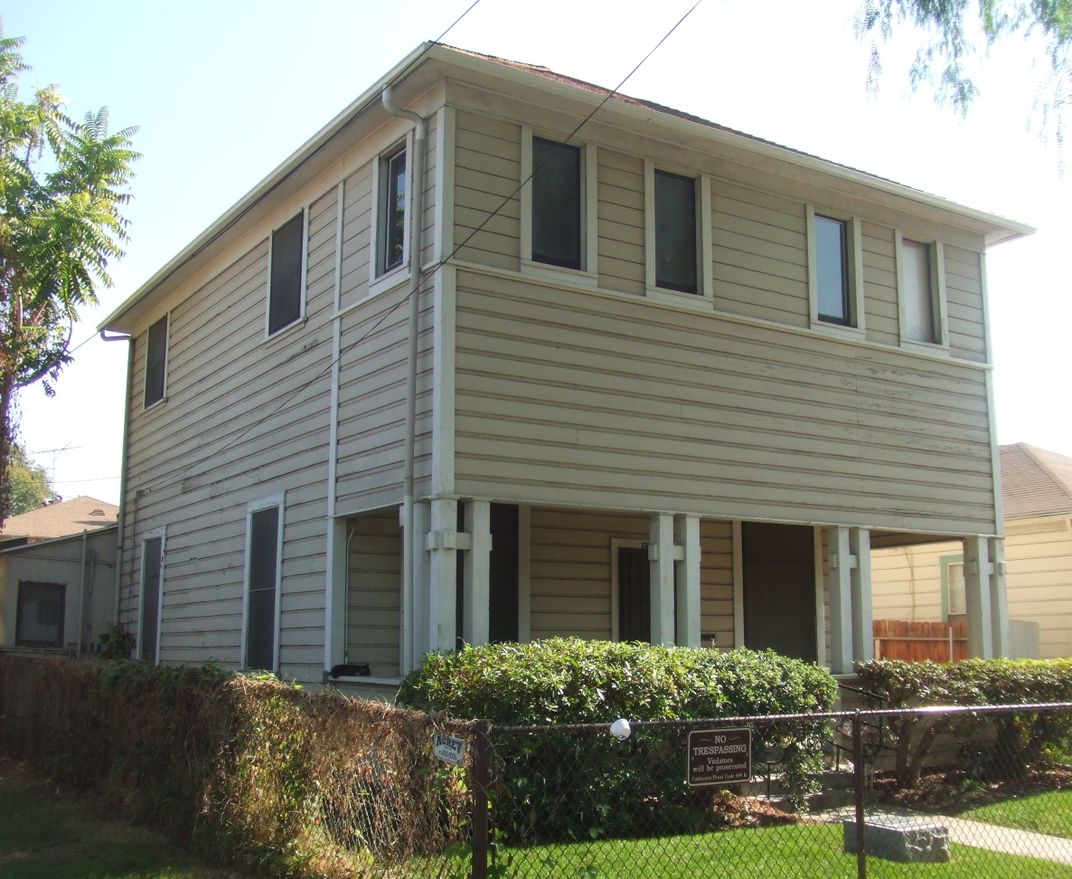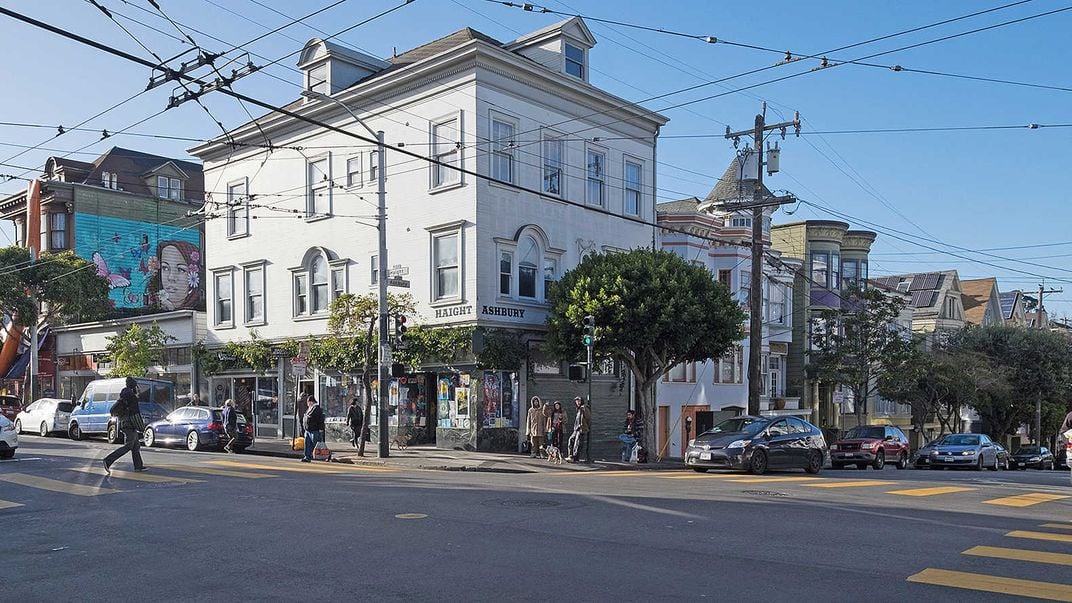Crowdsourcing Project Aims to Document the Many U.S. Places Where Women Have Made History
The National Trust for Historic Preservation is looking for 1,000 places tied to women’s history, and to share the stories of the figures behind them
/https://tf-cmsv2-smithsonianmag-media.s3.amazonaws.com/filer/b1/a0/b1a02994-250d-4133-a8c3-675b1b8af1dc/womenshistory_landingpg.jpg)
For nearly 30 years, Alaskan Ahtna Athabascan elder Katie John awaited resolution to her peaceful battle over Native subsistence rights. The legal dispute—centering on her family’s right to fish in Batzulnetas, a historic village and fish camp in Wrangell-St. Elias National Park—made it all the way up to the U.S. Supreme Court. The Court's ruling cleared the way for the subsistence fishing rights of many Alaska Native to be included under federal subsistence protection. Although John died in 2013 before litigation was complete, her 2014 win was a victory for Native Americans everywhere.
Today, the fish camp remains a testament to John's life work, and it represents just one of the many sites where women's history and achievements happened, often with no official sign or record recognizing their importance.
Since mid-January, the National Trust for Historic Preservation has been crowdsourcing places like the fish camp for its 1,000 Places Where Women Made History, and the process to submit is simple. Anyone can log an online entry, which consists of a photo, as well as a short paragraph about the U.S.-based property and its location. “This is our way of bringing people together to tell us what are the places and stories that matter to them,” says Chris Morris, a National Trust senior field officer who's spearheading the campaign. Through submissions from local preservation societies, community organizations, and everyday people, they've already compiled more than 750 sites. Some, like the fish camp, may not have much recognition of their role in history while others have been named National Historic Landmarks.
“Although 2020's 100th anniversary of women's suffrage is the impetus for this work,” says Morris, “we also wanted to use the project to fully honor those many female leaders related to American history and culture.”
According to Morris, the 1,000 Places project is part of a larger mission of the Trust’s to preserve women’s history. The Trust encourages local organizations to take direct action in preserving buildings and homes where women have “made a stand, raised their voice, and found the courage to change the world,” she says, and identifies historic sites that recognize women as part of its annual 11 Most Endangered Historic Places list, which in 2019 included the Excelsior Club in Charlotte, North Carolina—a once-thriving hub of the city's African American social scene—and Nashville's Music Row. The National Trust also operates 27 of its own historic sites at which they're working to bring to light the many amazing women associated with these places. The Farnsworth House in Plano, Illinois, for instance, was designed by famed modernist architect Ludwig Mies van der Rohe, but it was native Chicagoan and doctor Edith Farnsworth who commissioned it. “So this year Farnsworth House is shifting its perspective to tell the story of the house from her point of view,” says Morris.
The ever-growing list of 1,000 Places Where Women Made History currently includes everything from homes where pioneering women once lived, buildings where specific events that involved them occurred, and where women-led accomplishments happened. It includes spots like the former home of prominent investigative journalist Ida Tarbell in Titusville, Pennsylvania; the historic Auditorium Theatre in Chicago, saved through a fundraising campaign led by Beatrice Spachner; and Trumpet Records in Jackson, Mississippi, the former work site of a young record producer named Lillian McMurry, who recorded both black and white artists during the height of Mississippi segregation.
“We want to reveal those sort of lesser-known and untold stories, because we recognize that women's history is America's history,” says Morris. “This crowdsourcing effort has been very successful in revealing such underappreciated tales, ones of women’s vision, courage and leadership countrywide. They make up the majority of our entries. They’re tales of thinkers, artists, scientists, entrepreneurs...those women who have really shaped the nation that we are today, and who continue to help us to move forward.”
One of the Trust’s main goals with this project is to help a new generation of Americans, especially young women, see their own potential in the history of these places, says Morris. “We also will encourage everyone who submitted an entry to consider applying for funding from our many grant programs,” she says, “to support the broader interpretation and long-term preservation of these places where women made history.”
Five Sites Where Women Made History
Here are six lesser-known sites in the U.S. where women made history. Most of them are recognized in the 1,000 Places project, and all are on the Trust’s radar for renovation and reuse in some capacity. Though each is in various stages of preservation and redevelopment, they're all moving forward as a testament to women's achievements and inspiration for new stories to come.
Marjory Stoneman Douglas House; Miami, Florida

Located on a residential block in Miami's upscale Coconut Grove neighborhood, this uninhabited wood-framed and T-shaped cottage has a special place in American history, as the former home of Marjory Stoneman Douglas, a journalist, author and conservationist known as the “Grand Dame of the Everglades.” (She may sound familiar, too, as the namesake of the high school in Parkland, Florida, where 17 people were killed in a mass shooting in 2018.) Douglas published her seminal book, The Everglades: River of Grass, highlighting Florida's endlessly diverse subtropical wilderness and its need for ongoing preservation, in 1947. A month later, 20 percent of the Everglades’ southernmost portion became a national park. Douglas also founded the still-thriving Friends of the Everglades—an activist organization dedicated to protecting the landscape—in 1970, and often held meetings for conservationists at her Coconut Grove home, where she lived from 1926 until 1998. The Land Trust of Dade County currently oversees the property, which became a National Historic Landmark in 2015, and is working with other local and national preservation organizations for a reuse plan that continues Stoneman's legacy as an environmentalist, while also being respectful of the community that surrounds it. One possibility, says Morris, is to use the property as a residency where scientists can come to continue their research on environmental issues and climate change.
Pauli Murray House; Durham, North Carolina

Pauli Murray was both a civil rights and women's rights activist, an author, lawyer and member of the LGBTQ community, as well as the first African American woman to be ordained as an Episcopal priest. She spent her formative years in this one-and-a-half-story home, built by her grandfather, alongside her grandparents and aunts—all of whom helped raise Murray. In 1944, this descendent of both enslaved laborers and slave holders graduated first in her class at Howard University. Murray later received a Masters of Law degree from U.C. Berkeley in 1945, and in 1947 was named one of 10 “Young Women of the Year” by Mademoiselle magazine. She was also a founding member of the National Organization for Women (NOW) Foundation, which tackles a wide range of women's rights issues, from economic justice to reproductive rights.
Murray's Durham childhood home has been a National Historic Landmark since 2016, and is both an entry on the National Trust's crowdsourcing campaign as well as one of its National Treasures. The Duke Human Rights Center at the Franklin Humanities Institute runs the Pauli Murray Project, which oversees the property, renovated it and is preparing to open it to the public as the the Pauli Murray Center for History and Social Justice later this year.
Harada House; Riverside, California

In 1915, Japanese immigrants Jukichi and Ken Harada wanted to purchase a home in Riverside, but the California Alien Land Law of 1913 prevented them from doing so. Instead, the couple acquired their modest Lemon Street property by putting it in the name of their three young children—a move that soon became a focal point for the groundbreaking legal case California v. Harada. Under the 14th Amendment, the Haradas won the right to keep their 1884 home, though their lives would never be the same. In 1942, the entire family was relocated to Japanese internment camps where both Jukichi and Ken died. However, their youngest daughter Sumi returned to the Riverside home in the wake of World War II, taking in as boarders other Japanese families who'd lost their properties. Sumi resided at what's now known as Harada House until 1998, during which time she preserved many of the home's furnishings and fixtures, and kept a wealth of family heirlooms, including kimonos featuring the Harada family crest, personal letters and kitchenware. She also saved a message that her brother scribbled on a bedroom wall on the day his family was forced into a relocation center.
Today the Riverside Metropolitan Museum oversees the home, which Jukichi had transformed from a single-story saltbox into a multi-story space, and is working to both restore it and turn it into an interpretive center highlighting the Harada story—one of lost city rights, a fight against racial discrimination, and immigrants. The property has been a National Historic Landmark since 1990.
Doolan-Larson Residence and Storefronts; San Francisco, California

On the famous San Francisco corner of Haight and Ashbury streets—the heart of the 1960s counterculture movement—stands the Doolan-Larson building, a mixed-use, multi-story property built in the 20th century. This Colonial Revival-style structure, which survived the city's 1906 earthquake before being elevated to add storefronts, became home to San Francisco's first-ever hippie boutique. Twenty-four-year-old Peggy Caserta opened this mod clothing store, called Mnasidika (its name a shout-out to The Songs of Bilitis, a French book of lesbian poetry from the late 19th century), in 1965 and ran it until 1968, during which time it was a pivotal part of the Haight-Ashbury's counterculture scene. Caserta herself was bisexual—she was Janis Joplin's lover until Joplin's death in 1970—and according to Levi Strauss & Co., it was at Mnasidika that Jimi Hendrix developed his iconic Flower Child style. Caserta is also credited with convincing Levi Strauss to create bell-bottom jeans, which she then sold at Mnasidika and became a seminal part of '60s fashion.
When the property's owner Norman Larson died in 2018, he donated the Doolan-Larson building to San Francisco Heritage. Mnasidika’s original storefront—now a jewelry store and barber shop—remains largely as it was during the Summer of Love.* Though not yet on the list of places “Where Women Made History,” it is a part of the Trust's National Treasures. San Francisco Heritage and other preservation groups are currently looking at ways to reuse the structure in telling the stories of San Francisco's counterculture movement, including those of women like Caserta, as well as to highlight both its overall impact and continued relevance today.
Villa Lewaro; Irvington, New York
Another addition to the National Trust's 100 National Treasures list, Villa Lewaro was the summer home of Madam C.J. Walker (born Sara Breedlove), an early 20th century entrepreneur who made a fortune in developing hair products for African American women. Walker, who is considered the first African American female millionaire in the U.S., is the subject of the new Netflix TV series, “Self Made,” starring Octavia Spencer as Walker. Along with being a businesswoman, Walker was a philanthropist and political and social activist. She occupied the 34-room, Italianate-style Villa Lewaro from 1918 to 1919, and though it's not currently open to the public, visitors can take a virtual tour of the estate led by Walker's great-great granddaughter, A'Lelia Bundles. The New Voices Foundation—created to empower entrepreneur women of color— acquired the property in 2018 and is working toward turning it into a “think tank,” according to New Voice's founder Richelieu Dennis, “to foster entrepreneurship for present and future generations.”
*Editor's Note, March 30, 2010: A previous version of this article incorrectly stated that the hippie boutique Mnasidika in San Francisco was in a storefront now occupied by a t-shirt shop, when, in fact, it was in a storefront now occupied by a jewelry store and barber shop. The story has been edited to correct that fact.
/https://tf-cmsv2-smithsonianmag-media.s3.amazonaws.com/accounts/headshot/LauraKiniry.png)


/https://tf-cmsv2-smithsonianmag-media.s3.amazonaws.com/accounts/headshot/LauraKiniry.png)